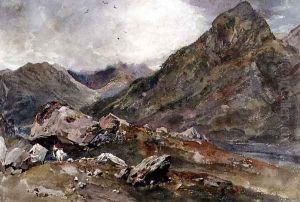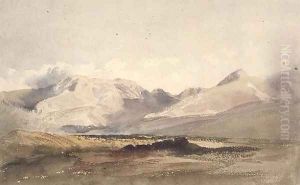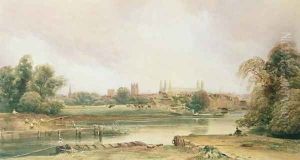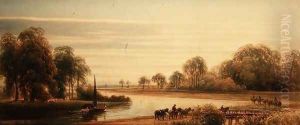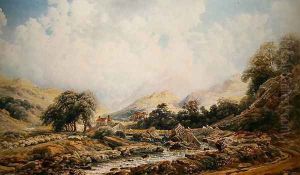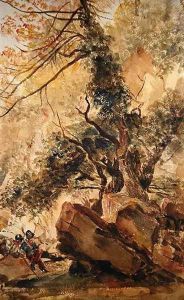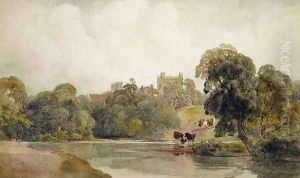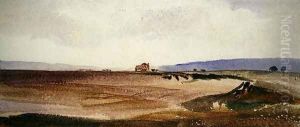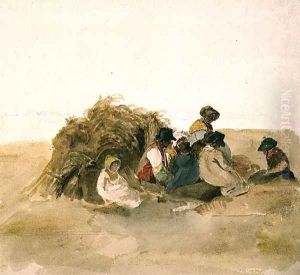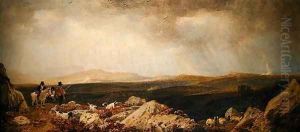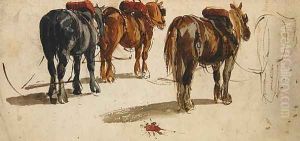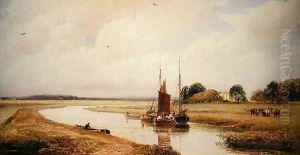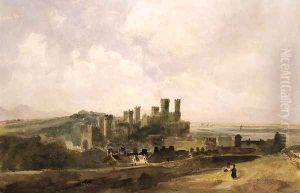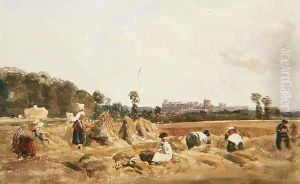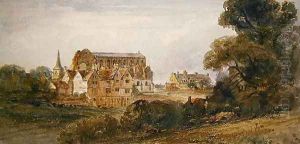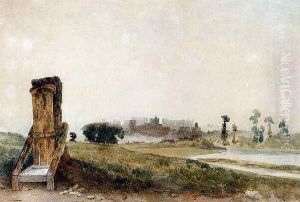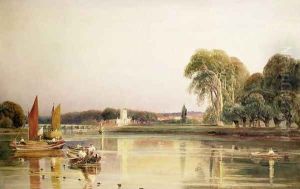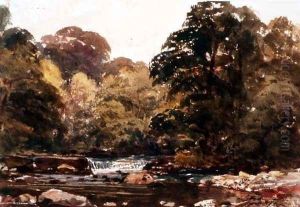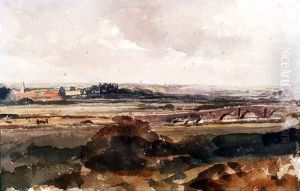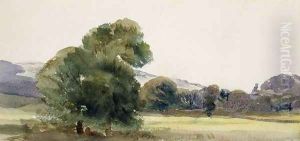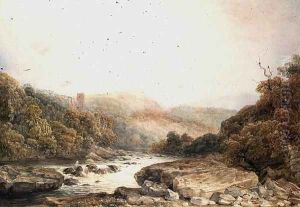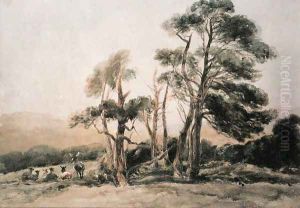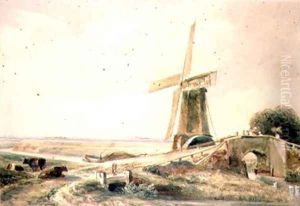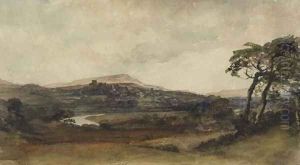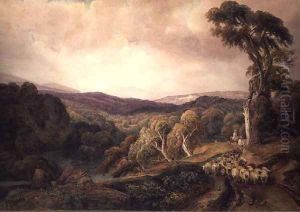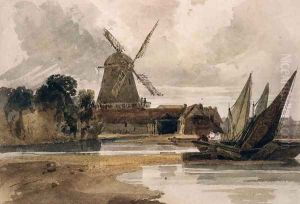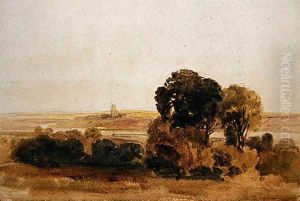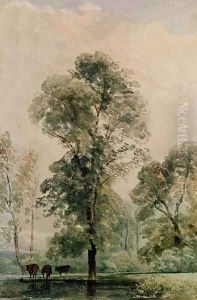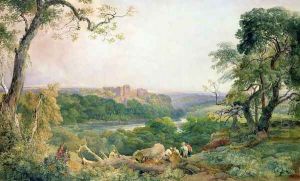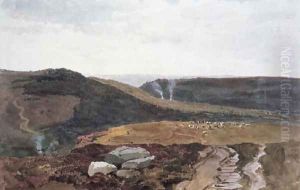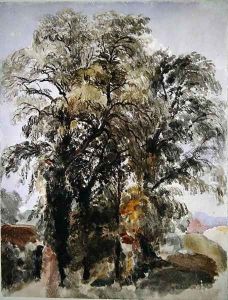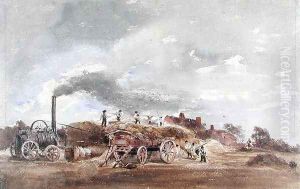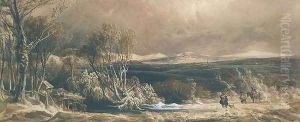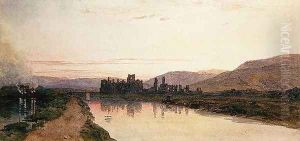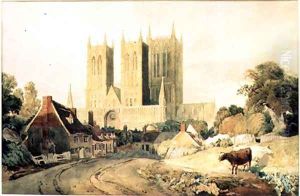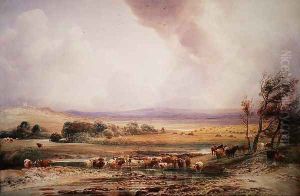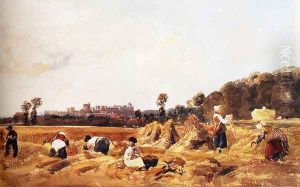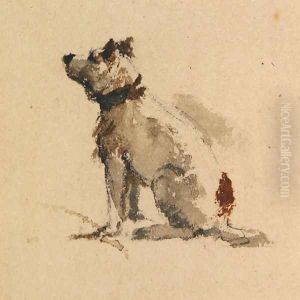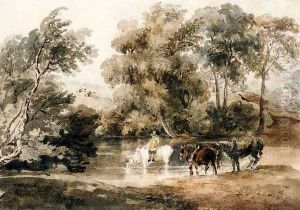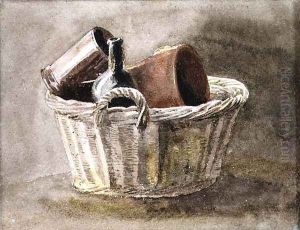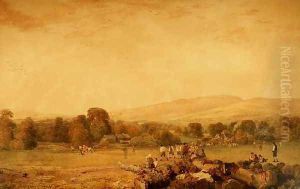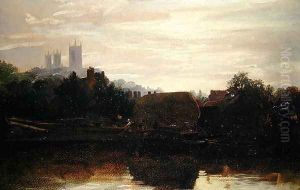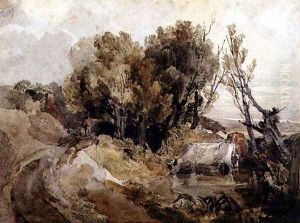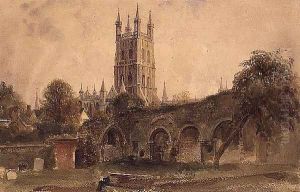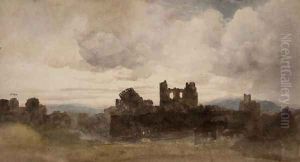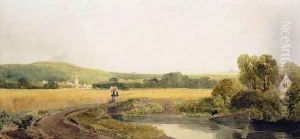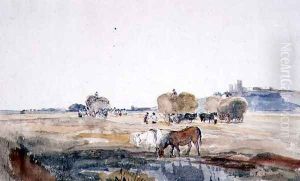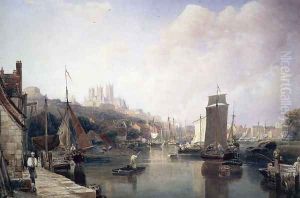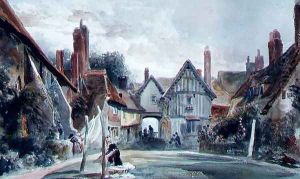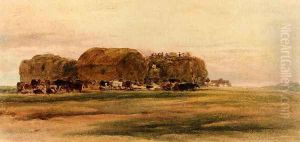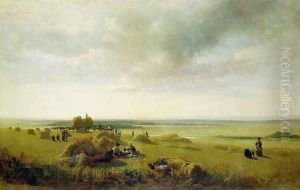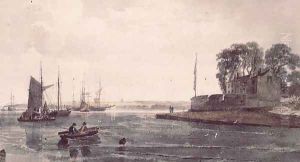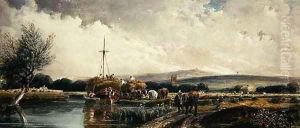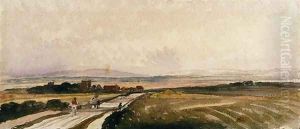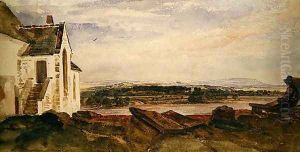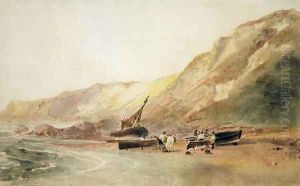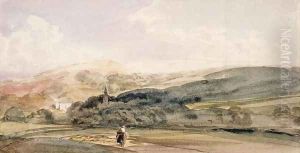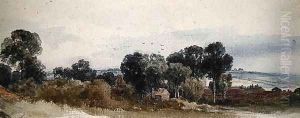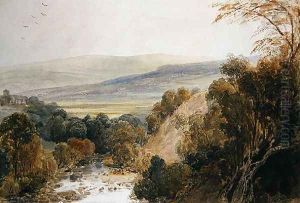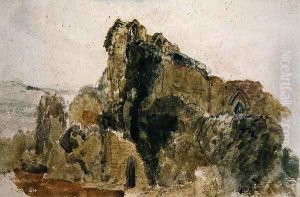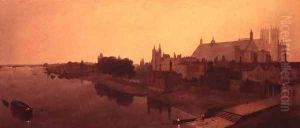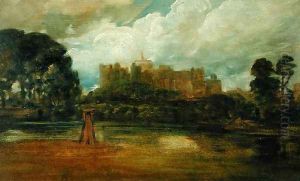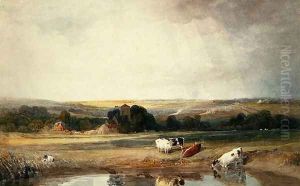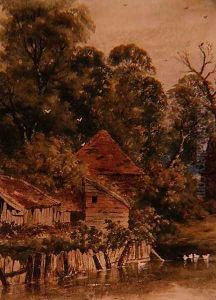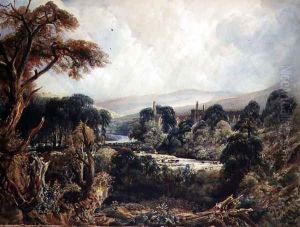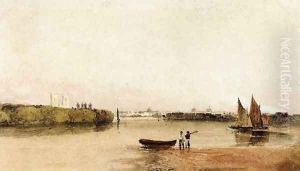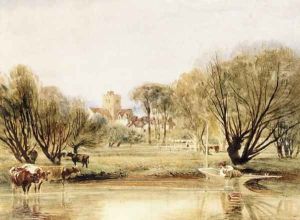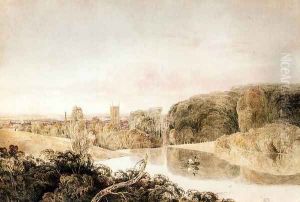Peter de Wint Paintings
Peter de Wint was an English landscape painter who is best known for his watercolor works. He was born on January 21, 1784, in Stone, Staffordshire, England. De Wint moved to London at a young age to pursue his interest in art. Initially, he was apprenticed to John Raphael Smith, a mezzotint engraver and portrait painter. However, his passion for landscape painting soon took precedence, and he began studying at the Royal Academy Schools in 1809, where he was able to further develop his skills.
De Wint's landscapes are characterized by their naturalistic approach and often depict the English countryside. His works have been noted for their broad, sweeping views and for the serene and pastoral quality they often evoke. De Wint was particularly adept at capturing the changing effects of light and weather in his scenes, and this sensitivity made his work stand out among his contemporaries. He frequently painted en plein air, a practice of painting outdoors that became more popular among landscape artists during this period.
Though he worked extensively in watercolors, de Wint also produced a number of oil paintings. His preference for watercolors was partly due to the influence of his mentor, Thomas Girtin, another prominent English landscape painter of the time. De Wint became associated with the 'Old Water-Colour' Society and exhibited there regularly. He was elected an Associate in 1812 and became a full member in 1813.
De Wint often traveled around England, seeking inspiration for his paintings. He made multiple visits to Lincolnshire, a county with which he had a strong personal connection through his marriage to Harriet Hilton, the sister of his friend and fellow artist, William Hilton. The Lincolnshire landscape, with its wide skies and flatlands, became a recurring subject in his work.
Peter de Wint's influence was not limited to his own artistic output; he was also a respected teacher. Among his pupils was the famous Pre-Raphaelite artist John Everett Millais. De Wint's legacy lies in the way he captured the essence of the English landscape, influencing the work of later artists and contributing to the development of British landscape painting.
De Wint passed away on June 30, 1849, in London. Today, his paintings can be found in numerous art collections, including the Tate Gallery and the Victoria and Albert Museum in London. His work continues to be celebrated for its beauty and its faithful representation of the English countryside.
